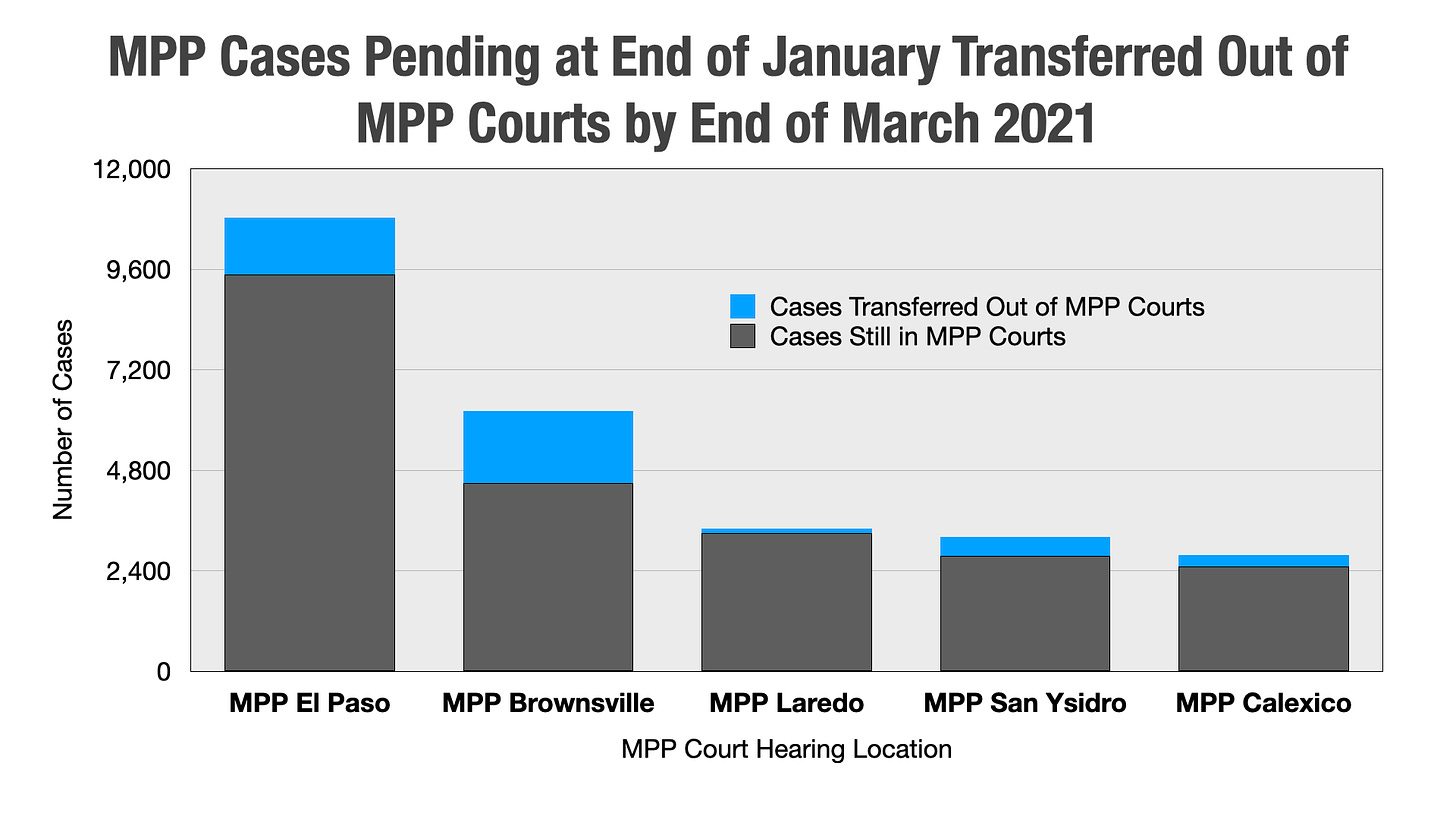Biden Administration Allows Previously Excluded Asylum Seekers to Enter the United States
Biden formally ended Migrant Protection Protocols (MPP), but thousands of asylum cases are still in limbo.
During the Trump administration, the Department of Homeland (DHS) implemented the Migrant Protection Protocols (MPP) — also known as ‘Remain in Mexico’ — in January 2019 in an effort to restrict those seeking asylum from entering the United States.
Under the Biden administration, DHS has ended MPP and begun to admit asylum-seekers that were originally excluded under MPP into the United States. Those of us at TRAC, a research institute as Syracuse University, analyzed the updated data on MPP cases through the end of March 2021 to provide the public with data-driven insights into the evolution of how MPP cases are being handled by the federal government.
Visit AustinKocher.com for more short articles and research about the current state of the US immigration system or follow me on Twitter here for news, policy, and data about immigration.
We wanted to understand the roll-out of Biden admin policies that allow migrants to enter the US to pursue their asylum claims.
Here are some of the key findings from the full report (available here).
26,432 MPP cases were pending at the U.S.-Mexico border at the end of January 2021.
Since January, the cases of 3,911 people were transferred from MPP courts to non-MPP courts, indicating that these people were permitted to enter the United States to pursue their asylum claims.
28% of the 6,200 MPP cases at the immigration court in Brownsville, Texas were transferred by the end of March 2021. Just 3% of the 10,800 MPP cases at the immigration court in Laredo were transferred.
Cuban nationals represented the largest group of pending cases at the end of January: 7,600 in total. 16% of all Cuban cases were transferred out of MPP by the end of March.
Nationals of El Salvador represented just under 2,000 cases in January. By the end of March, more than 26% of these cases were transferred out of MPP courts — the highest rate among all nationalities.
MPP cases have been transferred to 63 non-MPP courts across the country. The top three courts for receiving MPP cases were immigration courts in (1) Miami, Florida (651 cases), (2) Orlando, Florida (321 cases), and (3) Dallas, Texas (201 cases). Also in the top 10: Arlington, Virginia; Memphis, Tennessee; and Baltimore, Maryland.
Attorneys were on record as representing clients in 21% of cases transferred out of MPP since January. Just 10% of pending MPP cases still in MPP courts had an attorney. 43% of the 2,987 people in MPP who were allowed to enter the US under the Trump administration prior to January 31, 2021, had attorneys. This suggests that once cases are in the United States and the longer cases remain in the United States, the more likely it is that people are able to obtain an attorney.
85% of the MPP cases pending along the border at the start of the Biden administration remained assigned to MPP courts at the end of March.
Research Note: due to routine administrative delays, the number of migrants actually allowed to enter the U.S. is likely larger than the number of cases that have been transferred according to the court’s database.
Even though the Biden administration formally suspended the Migrant Protection Protocols, the program continues to be debated politically while it also continues to shape the case trajectories of thousands of people. One of the reasons that MPP data remains of interest to us as researchers is that we are able to contrast what happens with asylum applicants who are prevented from entering the United States (as they were under MPP) with those who are now permitted to pursue their claim inside the United States.
Already we can see that migrants paroled into the country are more likely to get an immigration attorney — a factor that can mean life or death for people fleeing persecution.




